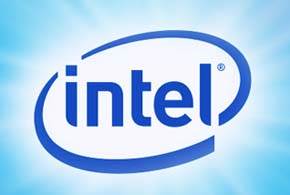Movidius’ low-power SoCs will integrate with Intel’s RealSense technology to bring computer vision processing to IoT, VR and other devices.
Intel is expanding its capabilities in virtual reality, artificial intelligence and the internet of things with the planned acquisition of Movidius, whose low-power processors are designed to enable much of the processing of data gathered from such technologies as Intel’s RealSense computer vision platform.
Intel officials are positioning the move as a way to increase the chip maker’s presence in a broad array of devices, such as robots, drones and virtual reality (VR) headsets, and make it larger player in such emerging areas as VR, augmented reality (AR), machine learning and artificial intelligence (AI). The acquisition is also part of Intel’s larger effort to refocus much of its efforts and resources on such growth markets, pivoting away from the struggling global PC market. Computer vision will play an increasingly important role in everything from drones and VR to autonomous cars and internet of things (IoT) devices, and the addition of Movidius gives Intel a low-power system-on-a-chip (SoC) business that can complement its RealSense technology and bring on-device processing to many of these devices.
“Simply put, computer vision enables machines to visually process and understand their surroundings. Cameras serve as the ‘eyes’ of the device, the central processing unit is the ‘brain,’ and a vision processor is the ‘visual cortex,'” Josh Walden, senior vice president and general manager of Intel’s New Technology Group, wrote in a post on the company blog. “As devices become smarter and more distributed, we recognize that specific System on a Chip (SoC) attributes will be paramount to giving human-like sight to the 50 billion connected devices that are projected by 2020. … With Movidius, Intel gains low-power, high-performance SoC platforms for accelerating computer vision applications.”
The Movidius acquisition is only the latest move by the chip maker to broaden its capabilities in AI, computer vision and cognitive computing. Intel officials in October 2015 announced the company was buying Saffron Technology, whose products are designed to mimic the human brain in how it learns and processes information, and in August bought Nervana Systems, a startup that has developed software and hardware for machine learning.
At the Intel Developer Forum (IDF) last month, officials also unveiled plans for a new Xeon Phi many-core chip—codenamed “Knights Mill”—that will compete with GPUs from Nvidia in the machine-learning task for training neural networks. Intel and Nvidia are seeing their competition in the AI and deep learning fields heating up.
The addition of Movidius will give Intel another tool in the AI space. Its RealSense cameras include depth-sending capabilities that enable systems to view the work in 3D. Much of the processing for these systems is done in the cloud, but Movidius’ low-power SoCs are designed to bring more of the computer vision processing onto the devices themselves. The company’s Myriad vision processing units (VPUs) are already being used by such companies as Google, Lenovo, DJI and FLIR for such devices as drones, security cameras and VR/AR headsets, according to officials.
“When computers can see, they can become autonomous and that’s just the beginning,” Movidius CEO Remi El-Ouazzane wrote in a post on the company blog. “We’re on the cusp of big breakthroughs in artificial intelligence. In the years ahead, we’ll see new types of autonomous machines with more advanced capabilities as we make progress on one of the most difficult challenges of AI: getting our devices not just to see, but also to think.”
Intel’s Walden said that the company sees “massive potential for Movidius to accelerate our initiatives in new and emerging technologies. The ability to track, navigate, map and recognize both scenes and objects using Movidius’ low-power and high-performance SoCs opens opportunities in areas where heat, battery life and form factors are key.”
In particular, Intel is looking to use Movidius’ technology in such areas as AR and VR, drones, robotics and digital security cameras, he wrote.







